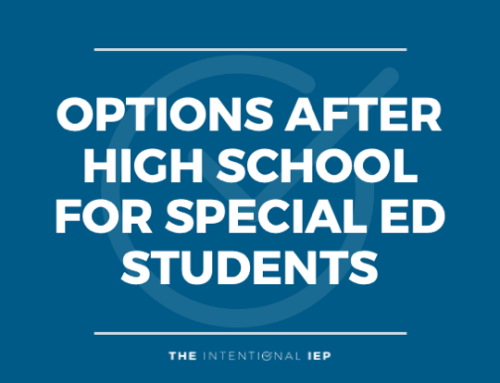Writing any IEP can be challenging, but writing an IEP for a student with an emotional disturbance can be even trickier.
Whether you are new to writing IEPs or even an IEP writing veteran, the following teacher-tested tips and tricks can make it easier to write an appropriate and effective IEP for students with emotional disturbances.
IEPs for Students with Emotional Disturbances
As with all IEPs, making sure that you have appropriate goals and benchmarks is important for students with emotional disturbances. However, in order to write the best IEP, it is important to delve deeper and look at things that might not make it into an IEP for a student without emotional goals.
Here are some ways to make sure that you are writing the best IEP possible.
Focus on the Cause of the Behavior
It can be very easy to focus on the behavior itself, but it is important to look at and focus on the cause of the behavior in the first place. Not only does this make it easier to define the goals, but it also makes it easier to focus on observable behaviors that indicate progress.
Here is a short snippet from one of the trainings inside of TII membership about behavior:
If you’re looking for more specifics on IEP’s like general education collaboration and functional behavior assessments – you’re in the right place!
You can join The Intentional IEP to gain access to over 150+ different IEP related trainings, and access to our IEP Goal Bank. Click the image above to join!
Define Terms
When writing the IEP, be sure to define and explain the terms you use. If you indicate that the student had a “meltdown” define exactly what that behavior looks like. Other common words that may need explanations include tantrums, shut down, defiant, etc. Not only does this help the teacher who is reading and implementing the IEP, but it also helps the student’s family understand exactly what the IEP is describing.
Consider Any Sensory Needs
Many times, although not all, students with emotional disturbances also have sensory-related issues. Take those into consideration and try to find a way to account for them in the IEP.
One of my favorite behavior resources is The Behavior Strategy Ring. Keep this on hand for a quick reference during the different stages of a behavior. Join The Intentional IEP here, or click the image above to join and gain access.
Involve Other Staff Members
Look beyond just the special and general education teachers for providing support for the student. The school counselor and others may be able to provide weekly counseling sessions and support.
Include an Excerpt About Field Trips
While it would be wonderful if every child was able to participate in field trips every time, for those students with emotional disturbances, it may be appropriate to have information in the IEP that relates to a day-of behavior evaluation. This ensures that the student’s behavior is safe and appropriate for the trip that day.
Build a Relationship with the Student

Think of the relationship as a marathon and not a sprint. It will take time to develop, but once you build that relationship, it will be easier to write an IEP that is reflective of the child’s true needs.
If you are struggling to write an IEP for a student with emotional disturbances, do not hesitate to reach out to your supervisor or other special education teachers in your district. They can be challenging to write, but you do not have to do it alone.
Did you know?! The Intentional IEP membership it comes with over 12,000+ SMART IEP goals, so there’s never a doubt that the goals you include are going to be effective and appropriate for your students. Take it for a test spin with our trial member here.






